
FCC Monitor
Posted on
Iowa
The FCC dismissed an application from West Des Moines-based St. Gabriel Communications to modify the construction permit for future station KCLG/88.7 (Odebolt). The station was originally granted 100kW/51m from Odebolt and applied to move to a location east of Odebolt using 31kW/84m, cutting in half the number of people who would receive their first non-commercial educational service from the new station. That prompted an informal objection from Albert Adam David, who contended that the change violated the FCC’s four year “holding period” for new non-comm stations. On June 13, the FCC issued a letter granting David’s objection and giving St. Gabriel Communications 30 days to modify its application. No modification was filed and the application was formally dismissed on July 16. The original CP for 100kW from Odebolt remains valid until April 2025 and the station can apparently still file a new modification application.
The FCC granted Sinclair’s KGAN/2.1 (Cedar Rapids, RF 29) an increase in antenna height from 585 to 604 meters above average terrain. As reported here in previous weeks, the move is part of a larger project that will result in a combined antenna shared with Gray’s KCRG-TV/9.1 (Cedar Rapids, to be RF 32) and Iowa PBS’ KRIN/32.1 (Waterloo, RF 35).
The FCC granted Iowa Public Radio’s K231DI/94.1 (Des Moines) a slight power increase from 119 to 140 Watts, changing to a different directional antenna that slightly adds coverage to the north without much change to the south. K231DI also will switch its input to KICJ/88.9 (Mitchellville); it has relayed WOI-FM/90.1 (Ames) since moving to 94.1 a few months ago.

FCC Monitor
The following are updates to previously-reported items and other recent regulatory filings and actions concerning Upper Midwest broadcast stations. This report is created by the author and is not an official report of the FCC.
The FCC has announced that, after a 17-year pause, it will resume accepting applications for pre-sunrise (PSRA) and post-sunset authorizations (PSSA) for AM radio stations. The authorizations allow stations that are daytime-only, or that use greatly reduced power at night, to increase power before sunrise and/or stay at higher power after sunset. The benefit mostly comes during the winter months when sunrise and sunset cut into drive time hours. There does not appear to be any official online public record of existing PSRA/PSSA’s.
Iowa
Sinclair’s KGAN/2.1 (Cedar Rapids, RF 29) has applied to increase its antenna height above average terrain from 589 to 604 meters, remaining licensed for 850kW. The application states that the proposed antenna will also be used by two other stations, previously reported by KCRG-TV to be KCRG and KRIN. (As noted a few weeks ago, KGAN is currently using 275.47kW during a transmitter replacement project.)
Gray Media Group’s purchase of K27LD-D (Salix) from Lowcountry 34 Media closed on July 10 after receiving FCC approval.
As noted in the report on their impending sale, KMAQ/1320 (Maquoketa) and K223DA/92.5 (Bellevue) returned to the air on July 6.
Nebraska
Soulful Praise was granted the callsign KSPG-LP for its future low-power FM station on 89.3 in Omaha.

Weekly Log: New Newscast in Des Moines
Hearst CBS affiliate KCCI/8 (Des Moines) announced that it will launch a 4 p.m. newscast on Monday, July 15. The hourlong newscast, replacing Kelly Clarkson’s syndicated show, will compete with Nexstar NBC affiliate WHO-DT/13 in the timeslot. (Clarkson will move up an hour to 3 p.m. replacing Jennifer Hudson, who moves to 12:37 a.m.) “KCCI 8 News at 4” will feature anchors Stacey Horst and Ben Kaplan and meteorologist Anne Campolongo.
Broadcasting veteran Carl Mann‘s third book on Omaha radio history, “Towers On The Prairie: The Changeover to Corporate Radio,” is now available on Amazon. The book is the last in a series and documents the market’s history from 1980 to 2010.
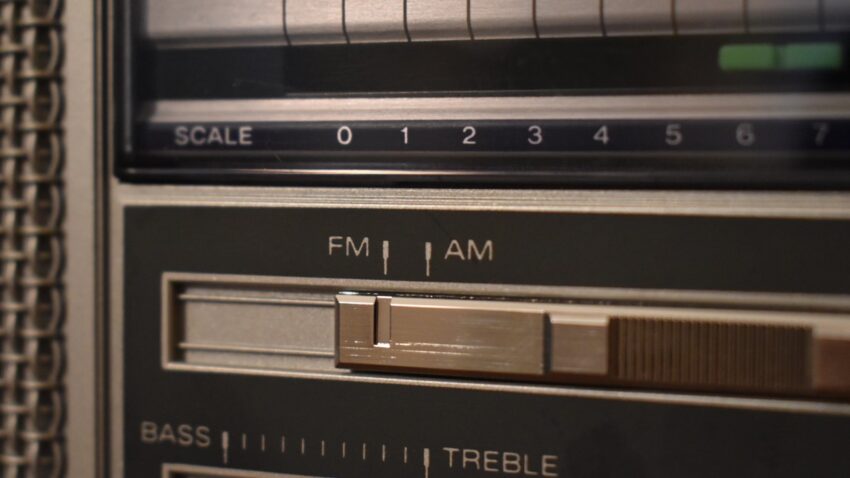
Coloff Media Buying Maquoketa Radio Stations

FCC Monitor
Iowa
Iowa Western Community College’s KIWR/89.7 (Council Bluffs) was granted special temporary authority to transmit with about 15% of its licensed 100kW. The station’s filing says it began to experience issues with its feedline and antenna around June 28.
Townsquare Media’s KBOB/1170 (Davenport) requested an extension of special temporary authority to transmit with its nighttime directional antenna pattern 24 hours per day while it continues repairs. The new filing says additional problems were discovered after initial repairs.
Nebraska
Soulful Praise requested the callsign KSPG-LP for its future low-power FM station on 89.3 in Omaha.
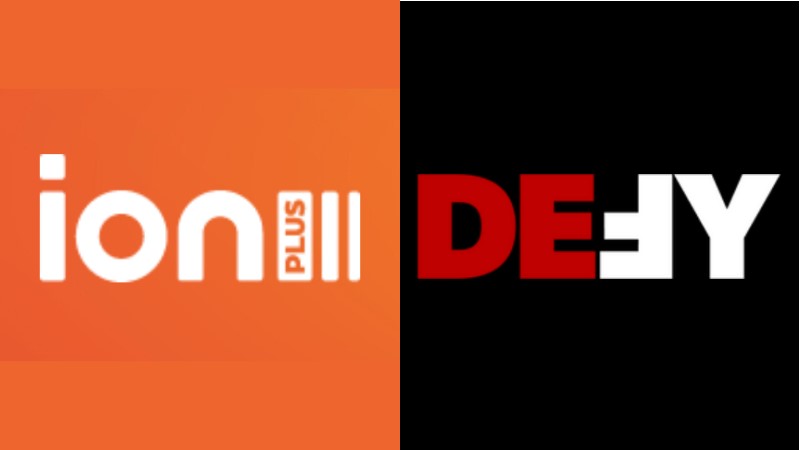
Several TV Network Launches, Swaps Cause Changes
Viewers in most Upper Midwest TV markets have seen at least one channel change in the last week or so as one new network launched and another converted to a new name, with its old name and programming going to a different new network.
Weigel’s MeTV Toons launched on June 25. Meanwhile, on July 1, Scripps’ three-year-old Defy network switched to Ion Plus, with the previous Defy logo and schedule moving over to a newly-launched network that had previously been promoted as “Dare.”
So far, the new version of Defy, operated by Free TV Networks, does not list any full-power affiliates in the Upper Midwest but is carried on a number of low-power stations.
Here is a summary of the changes in each regional market, according to the networks’ official affiliate lists and/or confirmed over-the-air reception:
Cedar Rapids-Waterloo:
KWWL/7.6 launched MeTV Toons
K17MH-D/17.3 and KFKZ-LD/35.7 switched to the new version of Defy
KPXR/48.5 switched from Defy to Ion Plus
Des Moines:
KAJR-LD/36.1 and KCYM-LD/44.4 switched to the new version of Defy
KFPX/39.2 switched from Defy to Ion Plus
KDIT-CD/45.4 switched to MeTV Toons
Omaha:
KETV/7.4 switched from Defy to Ion Plus
KQMK-LD/25.4 and KAJS-LD/33.2 switched to the new version of Defy
Rochester, MN:
KAAL/6.3 switched from Defy to Ion Plus
KXLT/47.3 switched from Laff to MeTV Toons

FCC Monitor
Iowa
Edge Spectrum’s K33QA-D/K20KF-D (Davenport) reports that it has completed construction of its new facility on channel 33.
Edge Spectrum’s K22LJ-D (Mason City), K35PA-D (Mason City), and K31PP-D (Sioux City) report that they went off the air June 1. Each notification states that Edge “has been unable to negotiate ongoing lease terms with American Tower” and that an alternate site is being sought.
Iowa Public Radio’s K231DI/94.1 (Des Moines) has applied for a slight power increase from 119 to 140 Watts, changing to a different directional antenna that slightly adds coverage to the north without much change to the south. The application also states that K231DI will switch its input to KICJ/88.9 (Mitchellville); it has relayed WOI-FM/90.1 (Ames) since moving to 94.1 a few months ago.
iHeartMedia’s WOC/1420 (Davenport) requested another extension special temporary authority to operate its directional antenna at variance and/or with reduced power. The latest filing states, “Appropriate engineering staff has not been available to continue work on these repairs.” The station’s original 2021 filing said several array parameters suddenly went out of tolerance. WOC is licensed to use 5kW day and night with different day and night directional patterns. The possible reduced power level has not been specified in filings.
Minnesota
Edge Spectrum’s K31LN-D (Rochester), and K15IS-D (Willmar) report that they went off the air June 1. Each notification states that Edge “has been unable to negotiate ongoing lease terms with American Tower” and that an alternate site is being sought.

Volunteers Help Keep Radio Stations On Air During Flood
As floodwaters inundated much of northwestern Iowa, volunteers helped sandbag to keep floodwaters out of Saga’s Spencer Radio Group, which includes KICD/1240, KMRR/104.9, and KICD-FM/107.7. The radio stations have been providing continuing coverage of the flood emergency, including daily live updates from the mayor.
Former WHO/1040 (Des Moines) morning co-host Maxwell Schaeffer launched a new podcast with an episode detailing the end of the show he and Amy Sweet had hosted until March.
Mason City Mayor Bill Schickel proclaimed June 22 to be “Tim Fleming Day,” honoring one of the longtime broadcasters let go by Alpha Media in last months job cuts.
William Ingalls announced he is joining Gray NBC affiliate KWQC/6 (Davenport) as 6 and 10 p.m. co-anchor.

FCC Monitor
The following are updates to previously-reported items and other recent regulatory filings and actions concerning Upper Midwest broadcast stations. This report is created by the author and is not an official report of the FCC.
Iowa
The FCC granted a modification to the construction permit for Gray TV’s KCRG-TV/9.1 (Cedar Rapids) to move from RF channel 9 to RF 32, specifying a reduction in antenna height from 607 to 552 meters above average terrain using a side-mounted directional antenna. A separate request for tolling explains that KCRG still plans to ultimately use the top-mounted antenna at 607 meters HAAT. The top-mounted antenna will be shared by KCRG, Iowa PBS’ KRIN/32.1 (Waterloo), and Sinclair’s KGAN/2.1 (Cedar Rapids), but KCRG’s filing says there have were delays in negotiations with Iowa Public and an agreement has now been reached. As of June 21, the FCC was still considering the request to extend the construction deadline to Aug. 16.
Sinclair’s KGAN/2.1 (Cedar Rapids) requested special temporary authority to transmit with 275.47kW, rather than its licensed 850kW, during a transmitter replacement project. The filing explains that KGAN will use a temporary transmitter while it replaces the main transmitter.
DTV America’s K17MH-D (Cedar Falls) requested special temporary authority to transmit at reduced power of 8kW, rather than its licensed 11.7kW, while the station works to repair four of the six power amplifiers in its transmitter.
Weigel/TV-49’s KDIT-LD (Fort Dodge) reports that it resumed operations of its fully-licensed power of 500W on June 16.
Iowa Public Radio’s K249EJ/97.7 (Des Moines) reports that the source of its IPR Classical feed is now the HD2 channel of WOI-FM/90.1 (Ames-Des Moines). K249EJ had previously relayed KICJ/88.9 (Mitchellville).

FCC Monitor: Iowa AM Goes Silent
The following are updates to previously-reported items and other recent regulatory filings and actions concerning Upper Midwest broadcast stations. This report is created by the author and is not an official report of the FCC.
Iowa
Maquoketa Broadcasting’s KMAQ/1320 (Maquoketa) reports that it went off the air May 26 due to a transmitter breakdown. Separately, KMAQ translator K223DA/92.5 (Maquoketa) reports that it is off the air since KMAQ is off the air.
Minnesota
Real Presence Radio’s KQAQ/970 (Austin) requested a six-month extension of special temporary authority to operate at 3.5kW, rather than its licensed 5kW, while it continues work to repair the transmitter’s power amplifier modules.
Nebraska
Flood Communications’ KOHA-LD (Omaha) has completed a move from RF channel 27 to channel 30, remaining 15kW. The channel change was needed due to the pending move of KUON (Lincoln) from channel 12 to 27.

FCC Monitor
The following are updates to previously-reported items and other recent regulatory filings and actions concerning Upper Midwest broadcast stations. This report is created by the author and is not an official report of the FCC.
Iowa
The FCC has upheld its decision to grant a new station on 88.9 in Dubuque to Vanguard Association of Sunbelt Colleges, dismissing a petition for reconsideration filed by competing applicant Augustana College. Augustana had argued that Vanguard did not have reasonable assurance that it could use the tower site specified in its original application because another antenna is already mounted near the specified spot on the tower. In its dismissal, the FCC writes, “We find that, although the Tower owner’s representative was incorrect about the available height, this error does not diminish VASC’s good faith reliance on the assurance of site availability.” As reported here previously, Vanguard was already been granted a modification to its construction permit to specify a lower position on the tower.
The FCC approved the callsign KRWO-LP for Old Paths Baptist Church’s future low-power FM station on 104.1 in Dubuque.

FCC Monitor
The following are updates to previously-reported items and other recent regulatory filings and actions concerning Upper Midwest broadcast stations. This report is created by the author and is not an official report of the FCC.
The FCC has announced that it will lift a 14-year-old freeze on channel change applications from Class A, low-power TV, and TV translator stations on August 20. Regular readers of this site may be surprised to read that there was a freeze in place, given the massive amounts of LPTV facility changes that have been reported here since 2010, but all of those channel changes were due to displacement caused by the spectrum repack or changes by full-power stations. The freeze is only lifting for Class A/LPTV/translator channel changes; facility moves of more than 30 miles are still not allowed.
Iowa
Following up on its previous notification that it is operating at reduced power, Family Stations’ KYFR/920 (Shenandoah) requested special temporary authority to operate at reduced power while repairs to a circuit board are made. The transmitter was damaged during a severe thunderstorm. The power level being used was not specified; KYFR normally transmits with 5kW day and 2.5kW night.
Old Paths Baptist Church has requested the callsign KRWO-LP for its future low-power FM station on 104.1 in Dubuque.
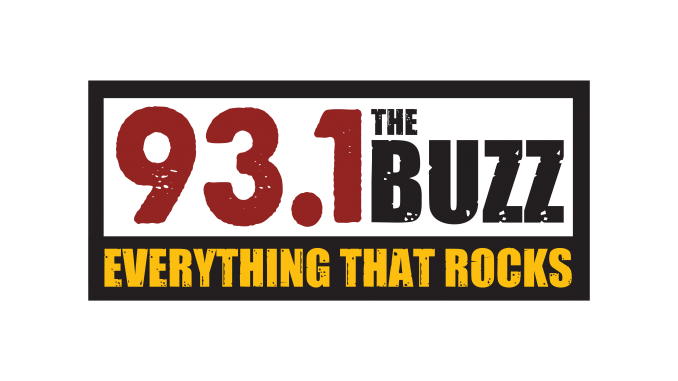
Update: Sale of Muscatine Radio Stations Withdrawn
A bankruptcy trustee for the company that owns three Muscatine radio signals has withdrawn an FCC application to transfer the licenses to a new company.
Jeffrey T. Testa, the trustee of JAM Media Solutions LLC, filed an application in April to transfer the licenses to Davis Media LLC. The deal would have included KMCS/93.1 (Muscatine), KWPC/860 (Muscatine), KWPC translator K236CF/95.1 (Muscatine), and four FM stations in North Carolina.
However, Testa withdrew the application on May 30 with a letter stating, “the transaction between Licensee and Davis Media, LLC will not proceed.”
The agreement had listed an aggregate purchase price of $800,000 but noted that the purchaser would have initially paid $650,000 at closing, with $150,000 going into a segregated account for repairs at one of the North Carolina transmitter sites. Any money not used for the repairs would have been given to the seller once repairs are complete.
The April filing indicated Davis Media was to begin operating the stations on May 1 under a time brokerage agreement.
Davis Media owns two other stations in North Carolina, as well as two in Virginia.
This article was originally posted on April 21 and was updated on May 31.

FCC Monitor: New Student-Run LPFM Granted in Iowa
The following are updates to previously-reported items and other recent regulatory filings and actions concerning Upper Midwest broadcast stations. This report is created by the author and is not an official report of the FCC.
Iowa
The FCC granted Western Iowa Tech Community College a new low-power FM station on 94.3 in Sioux City, using 30 Watts, with the callsign KWSR-LP. The college also owns public radio station KWIT/90.3; KWSR-LP will carry student programming from a separate facility.
KM Radio of Independence’s KQMG/1220 and KQMG-FM/95.3 (Independence) submitted filings on May 22, 2024, indicating that the FM station resumed operations on Dec. 28, 2023 and the AM station resumed operations on Dec. 29, 2023.
Dubuque-based Aquinas Communications is buying translator W211BZ/90.1 (Galena, IL) from The Moody Bible Institute of Chicago for $12,000. The application states W211BZ will switch its input to Aquinas’ KCRD-LP/98.3 (Dubuque). Aquinas also applied to transfer control of KCRD-LP from a two-person board to a five-person board.
Digital Networks-Midwest’s K31PO-D (Des Moines) reports that it has completed a move of its transmitter from Marshalltown to a site near Collins. The highly-directional 2.5kW signal reaches an area between Des Moines, Ames, and Marshalltown.
Gray Media Group is buying K27LX-D (Salix), along with three other low-power TV stations in Georgia and West Virginia, from Lowcountry 34 Media for a combined $350,000. K27LX-D is licensed for a 200-Watt signal covering Sioux City. The deal values K27LX-D at $100,000.
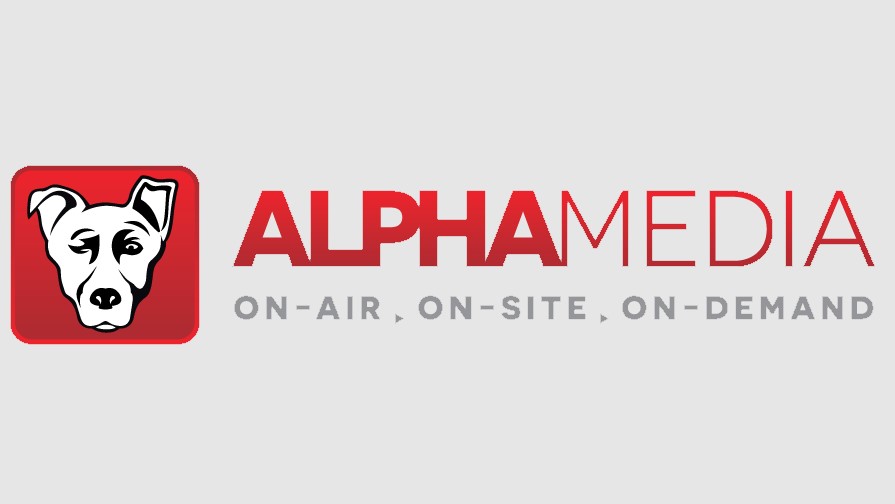
Alpha Media Drops Numerous Longtime Upper Midwest DJ’s
Though it does not appear the company has made any official announcement, many now-former employees have made public comments on social media and other platforms.
Jared Allen wrote that he is “one of several” people let go in Mason City. In Watertown, SD, John Seiber wrote that “ownership is going in a different programming direction and I am not a part of their future.” And KEYC-TV reports that there have been cuts in Mankato.
In South Dakota, a reader of this website was recording an aircheck of KBRK/1430 (Brookings) when morning host Bob Wayne announced that it was his last day:
RadioInsight reports that the cuts come after similar moves in Illinois and Missouri.
Alpha Media’s press release page does not include any announcement about the changes. The most recent press release, from last summer, touts the launch of an artificial intelligence DJ in Portland.
Alpha Media’s Upper Midwest holdings include four radio groups in Iowa, four in Minnesota, two in Nebraska, and three in South Dakota. It is the only local radio operator in many of the markets.
The extent of the cuts and the exact markets affected is not clear since it does not appear Alpha has publicly commented on the changes.

FCC Monitor: LPTV Rule Changes
The following are updates to previously-reported items and other recent regulatory filings and actions concerning Upper Midwest broadcast stations. This report is created by the author and is not an official report of the FCC.
Proposed LPTV/translator rule changes
The FCC has issued a notice of proposed rulemaking about numerous possible changes to rules for low-power TV and TV translator stations. Among many other things, potential changes include:
- Require that LPTV stations submit documents to online public inspection files if they are affiliates of a top-four network.
- Require that LPTV/translator stations be licensed to a community within their contour, rather than the current practice of simply letting applicants enter any community they choose regardless of the actual coverage area. If the rule is adopted, stations would have six months to change to a community of license that complies with the rules, if needed.
- Following many situations of LPTV stations being “hopped” across multiple locations to achieve a longer-distance move, the NPRM also proposes that Class A and LPTV/translator stations serve their community of license for at least one year before changing it.
- Set a minimum operating schedule of 14 hours per week for LPTV stations, ending the currently-allowed practice of turning on the transmitter for a few minutes once every 30 days to keep the license active. Test patterns or slides would not count towards the minimum operating schedule.
- Require that all LPTV stations use a standard four-letter callsign with an -LD suffix, ending the current practice that allows LPTV stations to choose between a four-letter callsign or the same type of alphanumeric callsigns also used by translators (such as K37AA-D).
Comments on the proposals are due within 30 days of the NPRM being published in the Federal Register.
Iowa
The FCC granted tolling to Vanguard Association of Sunbelt Colleges Corporation’s construction permit for a new station on 88.9 in Dubuque. The move means the countdown clock on the permit deadline is on hold while administrative review of a petition for reconsideration is underway. See the March 18 FCC Monitor for more details.

FCC Monitor
The following are updates to previously-reported items and other recent regulatory filings and actions concerning Upper Midwest broadcast stations. This report is created by the author and is not an official report of the FCC.
Iowa
Family Stations’ KYFR/920 (Shenandoah) reported that it has been operating at an unspecified reduced power since April 29 due to a damaged circuit board in its transmitter. It’s believed severe thunderstorms caused the damage. KYFR normally transmits with 5kW day and 2.5kW night.
The FCC has granted a modification of Vanguard Association of Sunbelt Colleges’ construction permit for a new station on 88.9 in Dubuque, switching from the original 3.1kW/185m (class C3) to 1.12kW/166m (class A).

FCC Monitor:
The following are updates to previously-reported items and other recent regulatory filings and actions concerning Upper Midwest broadcast stations. This report is created by the author and is not an official report of the FCC.
Iowa
Vanguard Association of Sunbelt Colleges Corporation requested tolling of the construction permit countdown clock for its future station on 88.9 in Dubuque. The grant of the permit is under administrative review after a competing applicant filed a petition for reconsideration, as explained in the March 18 FCC Monitor.

FCC Monitor: Des Moines LPFM Application Dismissed
The following are updates to previously-reported items and other recent regulatory filings and actions concerning Upper Midwest broadcast stations. This report is created by the author and is not an official report of the FCC.
Iowa
The FCC has dismissed Des Moines Community Broadcasting’s application for a new low-power FM station on 104.7 in Des Moines. In a letter, the FCC notes that the applicant was not incorporated until almost two months after it filed an application certifying that it is a non-profit educational organization.
Weigel Broadcasting’s KDIT-LD/17 (Fort Dodge) reported that it went off the air April 17 due to transmitter failure.

FCC Monitor
The following are updates to previously-reported items and other recent regulatory filings and actions concerning Upper Midwest broadcast stations. This report is created by the author and is not an official report of the FCC.
Iowa
Educational Media Foundation’s KQKL/95.3 (Keokuk) reports that it resumed transmitting full power of 100kW on April 3. The station had been at reduced power since March 14 due to a transmitter issue.
The FCC approved the transfer of KZOW/91.9 (Forest City) to the Waldorf Lutheran College Foundation’s Waldorf Acquisition LLC. The transfer is part of the purchase of Waldorf College from Mayes Education.

FCC Monitor
The following are updates to previously-reported items and other recent regulatory filings and actions concerning Upper Midwest broadcast stations. This report is created by the author and is not an official report of the FCC.
The FCC issued a report and order changing rules for FM booster stations to allow them to originate up to three minutes of separate programming per hour. Boosters have existed for decades and, unlike translators, operate on the same frequency as the primary station. The only current FM booster stations in the Upper Midwest operate in Rapid City, South Dakota, but the rule change could lead other FM stations to establish boosters for the purpose of geotargeting advertising and other programming to specific parts of their existing coverage area. The technology is being promoted by GeoBroadcast Solutions.
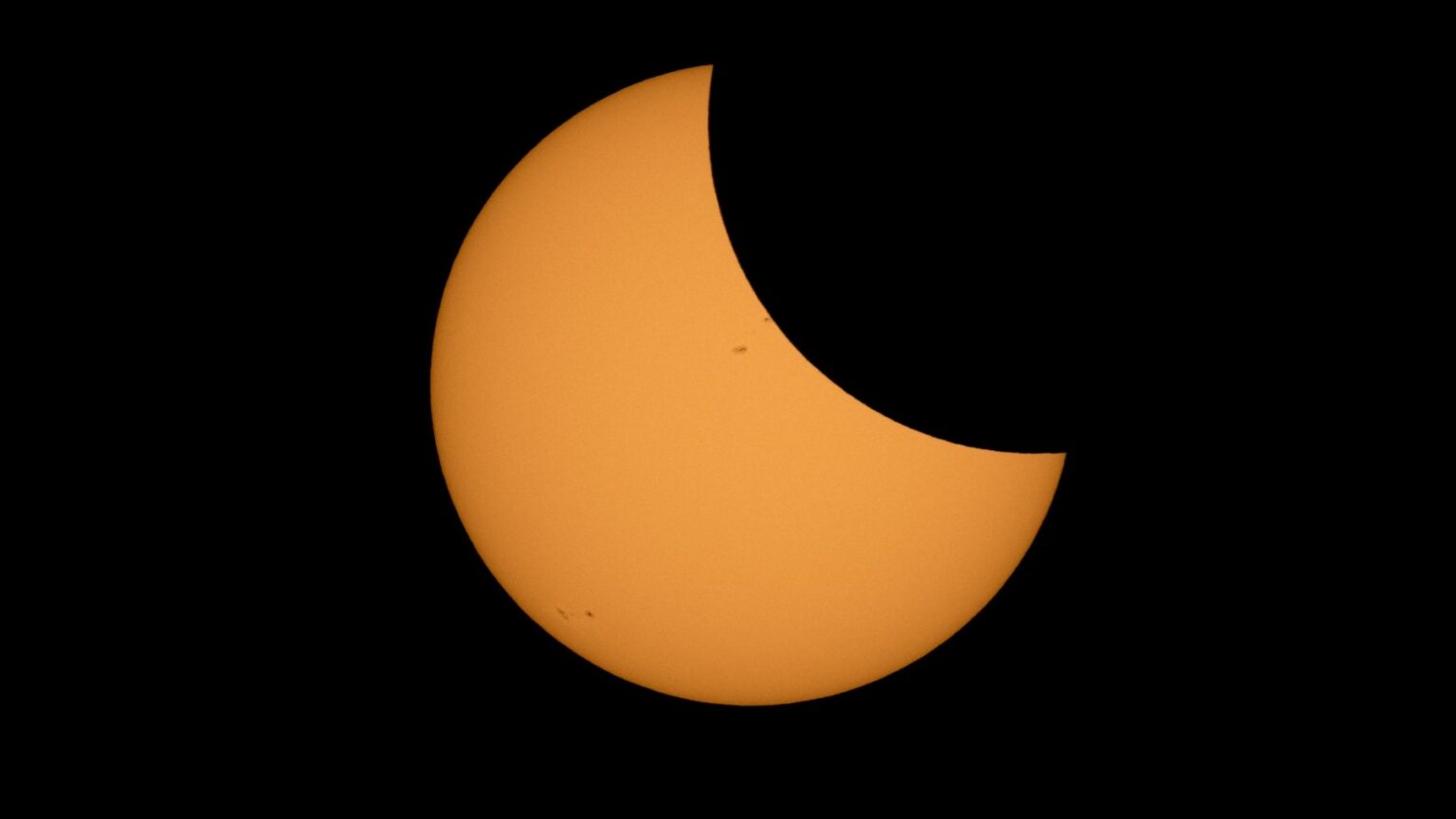
Listen for Distant AM Reception During Eclipse, Even If It’s Cloudy
Even if it’s cloudy on Monday, April 8, people will have a chance to “hear” the solar eclipse on AM radio.
Though the Upper Midwest is outside of the path of totality, a partial eclipse will last for more than two hours. According to NASA, it will begin shortly before 1 p.m. Central time, peak just after 2 p.m., and end after 3 p.m.
One lesser-known fact about eclipses is that the lack of sunshine leads to distant AM radio reception due to skywave propagation (which also happens every night, but few seem to know about that phenomenon these days).
While many AM stations have to reduce power or switch to more directional antenna patterns at night, there is no such requirement during an eclipse — creating the possibility for interesting reception.
Your reporter was in Grand Marais, Minn., during the 2017 eclipse, which had a path of totality through Nebraska and Wyoming. From Grand Marais, I heard several stations from Nebraska and Colorado with weak signals during the eclipse. It sounded similar to “critical hours” reception (the normal fading in and out of skywave signals that occurs in the hours before sunset and after sunrise).
With skywave reception, any station in or near the path of totality could receive some skywave enhancement during the eclipse. Listen for distant signals on any AM frequency that doesn’t have normal daytime reception in your area (if you’re not familiar with what’s “normal” for your location, check Radio-Locator to see what stations you should normally receive).
There are several large 50,000-Watt stations in or near the path of the eclipse that can already be heard on a nightly basis in the Upper Midwest, and are likely to be heard during the eclipse as well. They include:
- 650 WSM (Nashville) Classic Country
- 670 WSCR (Chicago) Sports
- 700 WLW (Cincinnati) News/Talk
- 720 WGN (Chicago) News/Talk
- 740 CFZM (Toronto) Classic Hits
- 760 WJR (Detroit) News/Talk
- 780 WBBM (Chicago) All News
- 810 WGY (Schenectady, NY) News/Talk
- 820 WBAP (Dallas) News/Talk
- 840 WHAS (Louisville) News/Talk
- 860 CJBC (Toronto) French-language News/Talk
- 890 WLS (Chicago) News/Talk
- 1000 WMVP (Chicago) Sports
- 1080 KRLD (Dallas) News/Talk
- 1100 WTAM (Cleveland) News/Talk
- 1120 KMOX (St. Louis) News/Talk
- 1160 WYLL (Chicago) Christian
- 1180 WHAM (Rochester, NY) News/Talk
- 1190 WOWO (Fort Wayne, IN) News/Talk
- 1200 WOAI (San Antonio, TX) News/Talk
- 1530 WCKY (Cincinnati) Sports
For DX’ers (people who listen for distant radio signals), the bigger catch will be stations that can’t normally be heard here because they are off the air or at greatly reduced power at night. Here is a look at some larger signals that seem to have potential to be new loggings for Upper Midwest DX’ers:
- 680 KKYX (San Antonio, TX) Classic Country
- 850 WKNR (Cleveland) Sports
- 880 KLRG (Sheridan-Little Rock) Classic Rock
- 1030 WGSF (Memphis, TN) Spanish-language
- 1070 WDIA (Memphis, TN) R&B Oldies
- 1110 KVTT (Mineral Wells-Dallas) “Radio Mirchi” South Asian format
- 1160 WCRT (Donelson-Nashville) Christian
- 1190 KFXR (Dallas) News/Talk
- 1270 KFLC (Benbrook-Dallas) Spanish Sports
- 1300 WNQM (Nashville) Christian
- 1360 KMNY (Hurst-Dallas) Spanish Christian
- 1440 KEXB (University Park-Dallas) Catholic
- 1510 WLAC (Nashville) News/Talk
- 1600 WMQM (Lakeland-Memphis, TN) Christian
However, a station doesn’t have to be in the direct path of totality to receive skywave enhancement, as evidenced by my reception of Colorado stations in Minnesota during the 2017 eclipse that didn’t directly pass over either state. Wikipedia has a full list of AM stations which operate at 50kW during the day.
According to NASA, these are the approximate times the path of totality of this year’s eclipse will reach cities and states around these times (all listed in Central time):
- 1:30 p.m. CDT, San Antonio, TX
- 1:45 p.m. CDT, Dallas
- 1:50 p.m. CDT, Arkansas
- 2:00 p.m. CDT, southeastern Missouri and southern Illinois
- 2:05 p.m. CDT, Indianapolis
- 2:15 p.m. CDT, Cleveland
- 2:20 p.m. CDT, Buffalo, NY
- 2:30 p.m. CDT, Maine
Keep in mind that skywave enhancement will begin well before the time of totality as the sky gets darker. The totality times listed above are essentially the peak times for possible reception.
Several broadcast TV networks will pre-empt regular daytime programming for live coverage beginning at 1 p.m. Central time, including ABC, CBS, NBC, Telemundo, and Gray TV’s Local News Live. In Canada, CBC’s main network will begin coverage at 1 p.m. Eastern.
Despite being a visual phenomenon, some radio stations are also providing a soundtrack to the eclipse. Live coverage from “Here & Now” will air on some NPR stations.
Cumulus Classic Hits outlet WVBO/103.9 (Winneconne-Oshkosh-Appleton) will feature a playlist of songs about the sun, moon, and space.

FCC Monitor: New LPFM’s Granted in Omaha
The following are updates to previously-reported items and other recent regulatory filings and actions concerning Upper Midwest broadcast stations. This report is created by the author and is not an official report of the FCC.
Iowa
Knoxville’s Inspiration Radio was granted the callsign KTEW-LP for its future low-power station on 93.9 in Knoxville.
The FCC granted Digital Networks-Midwest’s K31PO-D (Des Moines) a move closer to Des Moines, a tower south of Collins with a highly-directional 2.5kW signal. K31PO is currently licensed to transmit from Marshalltown.
Nebraska
The FCC granted The Simple Foundation a construction permit for a new low-power FM station on 105.3 in Omaha, using 100 Watts. The group is focused on refugees and low-income families and plans programming in potentially more than 50 languages.

FCC Monitor: Quad Cities TV Station Back; More LPFM’s Granted
Iowa
Kirkwood Community College’s K295AC/106.9 (Iowa City) has returned to the air after moving to a new transmitter site. It is now co-located with KZIA’s K253BE/98.5 (Iowa City) and continues to relay the college’s KCCK/88.3 (Cedar Rapids).
Iowa Public Radio closed on its purchase of K231DI/94.1 (Des Moines) from Youngers Colorado Broadcasting on March 20. K231DI was already relaying IPR’s WOI-FM/90.1 (Ames).
Educational Media Foundation’s KQKL/95.3 (Keokuk) informed the FCC that it has been operating at an unspecified reduced power since March 14 due to transmitter failure.
Digital Networks-Midwest’s K31PO-D (Des Moines), which is currently licensed to transmit from Marshalltown, has applied to move to a tower south of Collins with a highly-directional 2.5kW signal. The permit would replace a previous permit to use 2kW from a tower west of Collins. The low-power TV license began its life in Waterloo.
Nebraska
The FCC granted Soulful Praise a construction permit for a new low-power FM station on 89.3 in Omaha, using 58 Watts. The station plans to air Gospel music, local church programming, and local talk shows.

FCC Monitor
The following are updates to previously-reported items and other recent regulatory filings and actions concerning Upper Midwest broadcast stations. This report is created by the author and is not an official report of the FCC.
Iowa
Townsquare Media’s KJOC/93.5 (Bettendorf-Quad Cities) returned to full power of 6kW on Feb. 28 after repairing what had earlier been reported as an apparent antenna failure. Meanwhile, co-owned K281DB/104.1 (Davenport-Quad Cities) returned the air Feb. 28; its transmitter had been repurposed for KJOC’s temporarily facility.
Augustana College has filed a petition for reconsideration of the FCC’s decision to grant a construction permit for a new station on 88.9 in Dubuque to Vanguard Association of Sunbelt Colleges Corporation. Augustana had filed a competing application for a new station on 88.9 in Epworth. It is again alleging that Vanguard did not have reasonable assurance that it could use the tower at Sherill Mound, owned by Crown Castle, listed in its application because an Iowa Public Radio station already has an antenna overlapping the specified location on the tower. The FCC has previously decided that Vanguard did sufficiently show that it had reasonable assurance, but Augustana argues that the FCC erred by not considering the existence of the IPR antenna. Meanwhile, Vanguard has applied to modify the construction permit to move the antenna 19 meters lower on the tower using 1.12kW at 166 meters above average terrain.
The FCC identified competing applications for new low-power FM stations on 107.9 in Des Moines by Climate March and CPC of the WMM Usa-Des Moines IA-One Inc. as mutually exclusive (MX) group 39. The FCC will determine who gets the frequency using a points-based system unless the applicants reach a settlement by May 14.
The FCC has updated the FM Table of Allotments to list 97.1 at North English as a vacant class A (6kW/100m) allotment following the 2017 deletion of KMYQ’s license. The action means the allotment can go up for auction at a future unannounced date.
The FCC approved Iowa Public Radio’s purchase of K231DI/94.1 (Des Moines) from Youngers Colorado Broadcasting.
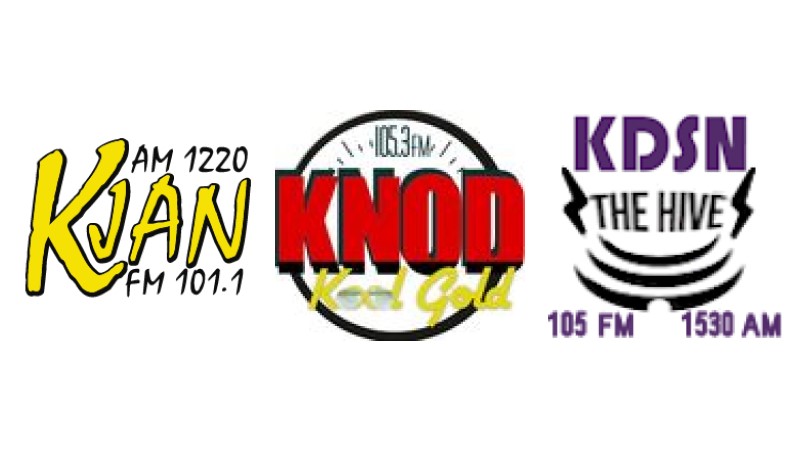
Van Ginkel Exiting Ownership of Several Western Iowa Radio Stations
J.C. Van Ginkel is redeeming his shares in several companies which own radio stations in Western Iowa, according to FCC filings.
The stations include Wireless Communications Corporation’s KJAN/1220 (Atlantic) and KJAN translator K266AN/101.1 (Atlantic), Wireless Broadcasting LLC’s KNOD/105.3 (Harlan), and Crawford County Broadcasting Corporation’s KDSN-FM/104.9 (Denison) and KDSN/1530 (Denison).
Van Ginkel currently owns 55.5% of each company. James Van Ginkel and John Van Ginkel each own 5.5% of the shares in Crawford County Broadcasting, with the Van Ginkel shares of that company totalling two-thirds.
Three agreements, filed for FCC approval on March 15, call for Van Ginkel to receive a combined $1.653 million plus 55.5% of of cash on hand and accounts receivable as of April 30 for WCC/KJAN and WB/KNOD and two-thirds of cash on hand and accounts receivable for CCBC/KDSN as of April 30.
The individual redemption prices are $867,000 for CCBC/KDSN, $564,000 for WCC/KJAN, and $222,000 for WB/KNOD, plus the specified cash on hand and accounts receiveable for each.
The applications specify that following the transaction, James M. Field will be the single controlling shareholder of CC/KJAN and CCBC/KDSN. For WB/KNOD, Field will own 50.5%, Rodney Christensen will own 39.6%, and Becky A. Christensen will own 9.9%.
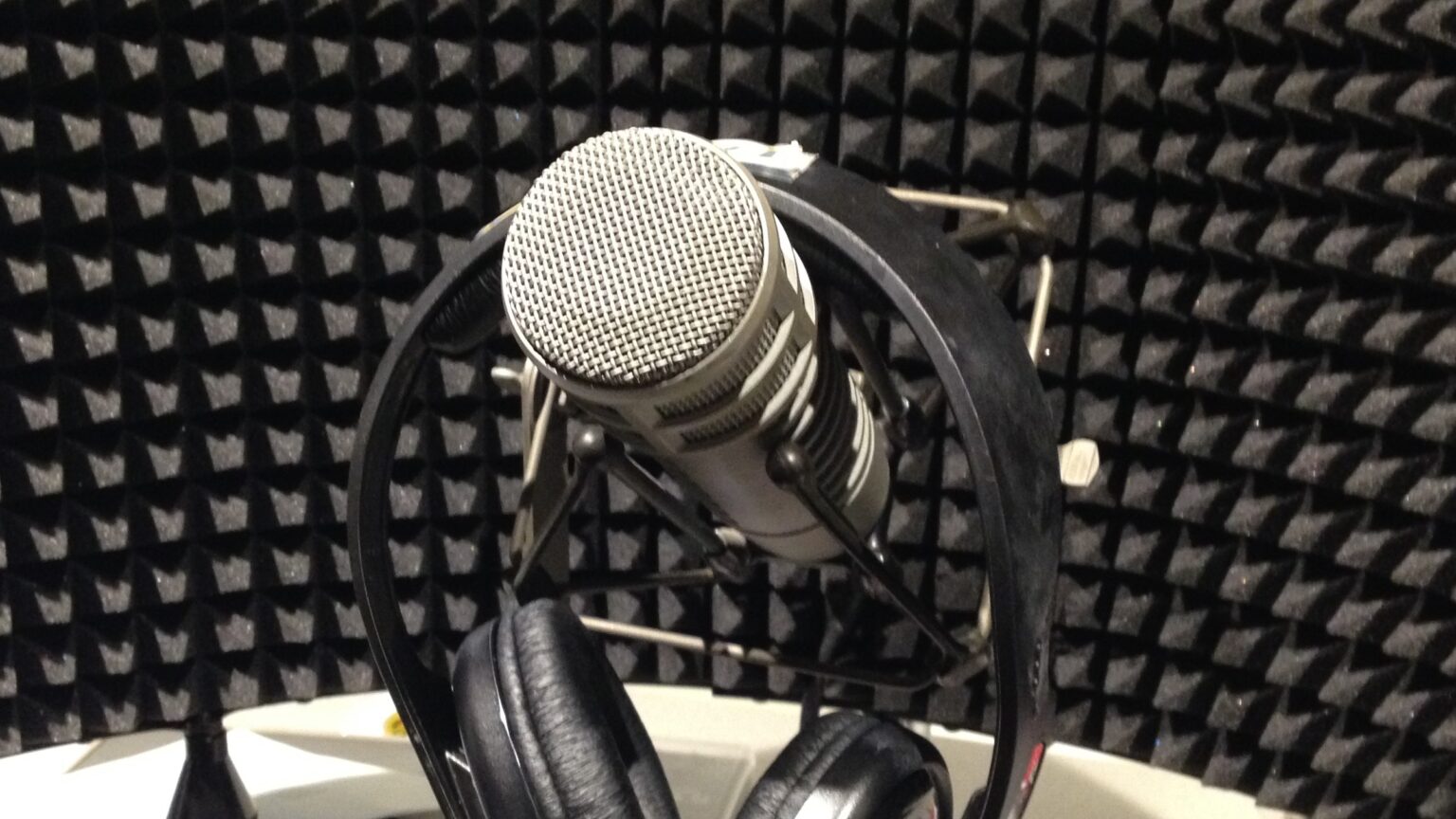
Weekly Log: Des Moines AM Team Exits, WBA Honors Eight
As first reported by RadioInsight, Amy Sweet announced that she and Maxwell Schaeffer are no longer histing mornings at iHeart’s WHO/1040 (Des Moines). The Des Moines Register also reported on the departure.

FCC Monitor: Several More LPFM’s Granted;

FCC Monitor
The following are updates to previously-reported items and other recent regulatory filings and actions concerning Upper Midwest broadcast stations. This report is created by the author and is not an official report of the FCC.
Iowa
Iowa Public Radio’s KSUI/91.7 (Iowa City) returned to full power of 100kW on Feb. 27 after resolving technical problems that had caused the station to operate at reduced power since late December.
TLC Broadcasting’s KCMR/97.9 (Mason City) returned to full power of 6kW on Feb. 23 after resolving a transmitter issue.
After a years-long back-and-forth, the FCC has formally granted Heritage Baptist Church a construction permit for a new station on 88.1 in Burlington and dismissed Sound in Spirit Broadcasting’s competing application. The new station will use 5kW/69m (class A). See the Feb. 5 FCC Monitor for more background.
Grace Baptist Church of Marion requested the callsign KGCI-LP for its future low-power FM station on 98.7 in Marion.

FCC Monitor
The following are updates to previously-reported items and other recent regulatory filings and actions concerning Upper Midwest broadcast stations. This report is created by the author and is not an official report of the FCC.
Iowa
Nexstar CBS affiliate WHBF/4.1 (Rock Island, IL-Quad Cities) went off the air Jan. 31 due to transmitter failure. A notice on the station’s website says its programming is being carried on channel 26.4 of sister station KGCW (Burlington-Quad Cities).

FCC Monitor
The following are updates to previously-reported items and other recent regulatory filings and actions concerning Upper Midwest broadcast stations. This report is created by the author and is not an official report of the FCC.
Iowa
Mary’s Holy Voice has signed on new station KMHV/89.5 (Kalona), serving an area southwest of Iowa City. The new station uses 5.5kW/56m (class A) and carries Catholic programming from EWTN Radio and Relevant Radio.
New low-power FM’s granted:
- Dyersville: 106.7, God’s Grace Radio, 100W. The station plans to carry Catholic programming from EWTN Radio and Relevant Radio.
- Knoxville: 93.9, Knoxville’s Inspiration Radio, 100W.
- Washington: 92.3, Marion Avenue Baptist Church, 100W.
Divine Mercy Educational Radio Association’s K249EP/97.7 (Fort Madison) applied to move its transmitter northwest to Saint Paul, Iowa, and change frequency to 94.3, remaining 250 Watts. If granted, the construction permit would replace a previous CP to move to 94.3 but remain at its present site in West Point.
Nebraska
Alpha Media’s KFRX/106.3 (Lincoln) reported that it is transmitting at reduced power of 9.2kW, rather than its licensed 100kW, due to an antenna burnout. It is was granted special temporary authority to continue transmitting at the reduced power while repairs continue.

FCC Monitor: New Iowa FM
The following are updates to previously-reported items and other recent regulatory filings and actions concerning Upper Midwest broadcast stations. This report is created by the author and is not an official report of the FCC.
Iowa
The FCC granted Vanguard Association of Sunbelt Colleges Corporation a construction permit for a new station on 88.9 in Dubuque. The new station will use 3.1kW/185m (class C3) from a tower northwest of Dubuque. In approving the application, the FCC dismissed a competing application from Augustana College for a station on 88.9 in Epworth. It also denied a petition to deny filed by Augustana and an informal objection from Iowa Public Radio. See the FCC’s Feb. 8 letter for more background.
The FCC granted St. Gabriel Communications/Iowa Catholic Radio’s KLOX/90.9 (Creston) a construction permit to upgrade from 500W/35m (class A) to 100kW/101m (class C1).
The FCC granted Old Paths Baptist Church a construction permit for a new low-power FM station on 104.1 in Dubuque, using 100W. (A previous construction for an unrelated translator on 104.3 in Dubuque expired unbuilt in 2021.)
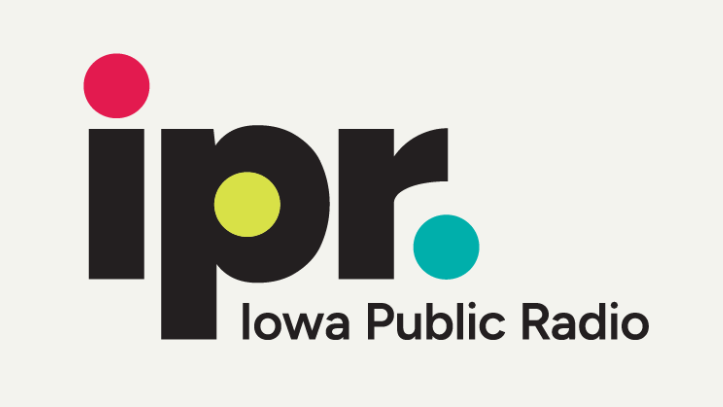
Iowa Public Radio Buys Third Des Moines FM Signal
Iowa Public Radio is buying a Des Moines FM translator that recently moved to a new frequency, giving it a third strong signal in the capital city.
The deal filed with the FCC on Feb. 7 calls for IPR to buy K231DI/94.1 (Des Moines) from Youngers Colorado Broadcasting for $100,000. K231DI was formerly K295CB/106.9, which had relayed KXLQ/1490 (Indianola).
The asset purchase agreement indicates K231DI is now relaying WOI-FM/90.1 (Ames), which carries IPR’s News and Studio One service.
WOI-FM is the network’s large FM signal in central Iowa. IPR also has a half-dozen smaller FM signals in the region carrying its 24-hour Classical service, including K249EJ/97.7 (Des Moines), while WOI/640 (Ames) carries 24-hour news.
K231DI transmits with 119 Watts from the northeastern part of Des Moines, overlapping with K249EJ’s more centrally-located 250-Watt signal.
Long-term programming plans for K231DI have not been announced.

FCC Monitor: Several New LPFM’s Granted
The following are updates to previously-reported items and other recent regulatory filings and actions concerning Upper Midwest broadcast stations. This report is created by the author and is not an official report of the FCC.
Iowa
For the second time, the FCC has changed the tentative selectee for a new station on 88.1 in Burlington after additional claims from one of the applicants. Using its points-based system to resolve competing non-commercial applications, the FCC had first selected Heritage Baptist Church based on three points as being an established local applicant and two points for diversity of ownership. However, Sound in Spirit Broadcasting successfully argued that Heritage didn’t qualify as an established local applicant under FCC rules and Spirit was then named the tentative selectee based on two points for diversity of ownership and one for having the best technical proposal. Heritage then argued that Spirit did not actually qualify as having the best technical proposal because its proposed facility would not reach at least 10% more people than Heritage’s. The FCC now says its analysis confirms that Spirit does not qualify for the best technical proposal point, meaning each applicant now has two points. Heritage won on a tiebreaker because it has no existing licenses, while Sound in Spirit has three.
The FCC granted Grace Baptist Church of Marion a construction permit for a new low-power FM station using 100 Watts on 98.7 in Marion.
The FCC granted Calvary Baptist Church a construction permit for a new low-power FM station using 100 Watts on 95.7 in Waterloo.
Educational Media Foundation’s KAIP/88.9 (Wapello) reported that it returned to full power on Jan. 27. It had been at an unspecified reduced power since Jan. 9 due to a power supply module failure.

FCC Monitor: Two LPFM Applications Dismissed; Duluth/Fargo TV Sale OK’d
The following are updates to previously-reported items and other recent regulatory filings and actions concerning Upper Midwest broadcast stations. This report is created by the author and is not an official report of the FCC.
Iowa
Youngers Colorado Broadcasting’s K295CB/106.9 (Des Moines) filed a license to cover application indicating that it has completed a frequency change to 94.1 with the new callsign K231DI. K295CB had previously related KXLQ/1490 (Indianola); the application indicates K231DI is relaying Educational Media’ Foundation’s KLOV-FM (Winchester, OR) via local translator K213DV. The translator reduced power slightly from 132 to 119 Watts with the frequency change.
TLC Broadcasting’s KCMR/97.9 (Mason City) has requested special temporary authority to transmit with 343 Watts ERP rather than its licensed 6kW due to a transmitter malfunction.
Following up on its earlier reduced power notification, Iowa Public Radio’s KSUI/91.7 (Iowa City) has requested special temporary authority to continue transmitting at 17% of its licensed 100kW. The filing states that there are problems with both the station’s main and backup transmitters.
The FCC dismissed Holy Mother Mary’s application for a new low-power FM station on 98.7 in Cascade, citing the proposed facility’s failure to protect an allotment for a future full-power station on 98.7 in Asbury.
St. Gabriel Communications’ KLOX/90.9 (Creston) has applied to upgrade from 500 Watts to 100kW. The station also had a construction permit for 100kW under previous ownership.

FCC Monitor: Defining Localism; UP AM Station Seeks Downgrade
The following are updates to previously-reported items and other recent regulatory filings and actions concerning Upper Midwest broadcast stations. This report is created by the author and is not an official report of the FCC.
National
The FCC has issued a notice of proposed rulemaking defining “local programming” as part of an initiative to offer priority to certain applications from stations that offer at least three hours of local programming per week.
To qualify as local, the programming would have to be produced either within the station’s principal community contour or within 25 miles of its community of license. It can include recordings from outside of the local area “as long as the program also includes some other element of local creation” (a minimum percentage of local content is not specified). It cannot include “repetitive or automated programs.”
The initiative could have the side effect of creating an official listing of which stations have local programming, though participation will be voluntary. The priority would only apply to renewal, assignment, or transfer of license applications, not for facility changes or special temporary authority requests.
Iowa
The FCC granted special temporary authority for Townsquare Media’s KJOC/93.5 (Bettendorf-Quad Cities) to use 250 Watts from an alternate site after an apparent antenna failure. The temporary KJOC facility is actually the equipment of Townsquare’s K281DB/104.1 (Davenport), which is temporarily off the air due to KJOC’s emergency operations.
Educational Media Foundation’s KAIP/88.9 (Wapello) reported that it has been operating at an unspecified reduced power since Jan. 9 due to a power supply module failure.

Tegna’s KARE, WOI, WQAD Return to DirecTV
Tegna’s stations have returned to DirecTV and AT&T U-verse after a retransmission consent dispute that resulted in the stations being removed for six weeks.
The two companies said in a brief statement on Saturday, January 13, that they had reached a new multi-year distribution agreement covering 64 Tegna stations in 51 markets. Programming resumed at the beginning of a holiday weekend that included NFL playoff games on all four major networks.
Tegna stations include NBC affiliate KARE/11 (Minneapolis), ABC affiliates WOI-DT/5 (Ames-Des Moines) and WQAD/8 (Moline-Quad Cities), and CW affiliate KCWI/23 (Ames-Des Moines).
“DIRECTV and TEGNA greatly appreciate the patience of their subscribers and viewers,” the statement read.
Terms of the agreement were not released.
In a news release issued when the dispute began, DirecTV had said Tegna was seeking a rate increases “that would make it the most expensive broadcaster nationwide.”
Meanwhile, Tegna had said it was seeking “fair compensation” and said DirecTV was misleading customers about big fee increases leading to higher bills. The statement has since been removed.
The outage came exactly three years after a similar dispute led to a three-week Tegna-DirecTV blackout.
Des Moines and the Quad Cities are among 11 Upper Midwest markets that have were affected by previous retransmission consent disputes in 2023.

FCC Monitor: Several FM’s at Reduced Power
The following are updates to previously-reported items and other recent regulatory filings and actions concerning Upper Midwest broadcast stations. This report is created by the author and is not an official report of the FCC.
Iowa
Following the station’s earlier dismissal application, the FCC on Jan. 8 formally canceled the license of Grinnell College’s KDIC/88.5 (Grinnell) for the second time. The station’s callsign now appears variably as DKDIC, DDKIDC, and DDDKDIC in FCC records, indicating the multiple times it has been deleted.
The University of Iowa’s KSUI/91.7 (Iowa City) informed the FCC that it has been operating at about 17 percent of its licensed 100kW since Dec. 28 due to unspecified technical problems.
The FCC again extended the deadline for Edge Spectrum’s K20KF-D (Davenport) to return to the air to Aug. 1, 2024. A letter approving the extension, and others reported below, notes that Edge has voluntarily agreed to provide the FCC bi-weekly updates on the status of construction.
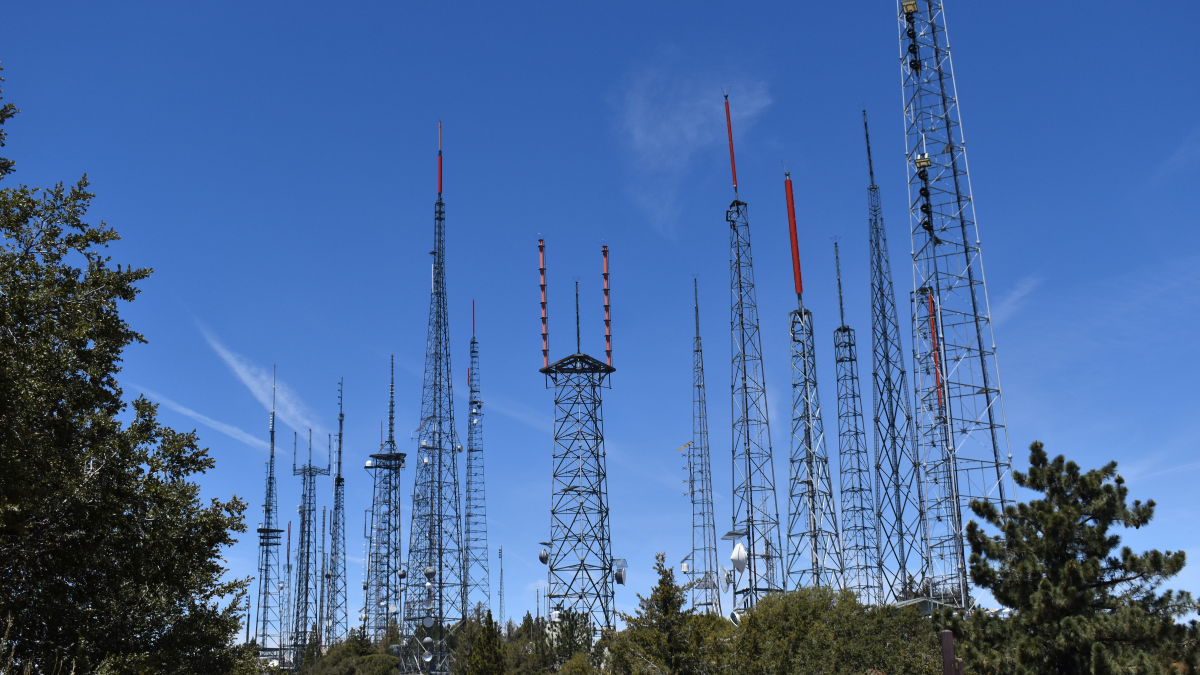
Reminder: Broadcast TV Is Free. Here’s How to Watch
Often lost in the coverage of retransmission consent disputes between broadcasters and pay TV providers is the fact that broadcast TV is still free.
Many articles on the disputes, like this recent article from NextTV, lament the impact on consumers but completely omit the fact that network TV is still broadcast on the free public airwaves.
Since this is a broadcasting website, I presume that most of my readers are aware of the fact that broadcasting still exists. Perhaps I am assuming too much.
It should be no surprise, I suppose, after decades of attention to cable, satellite, and streaming services, that some viewers are seemingly unaware that you can still receive TV for free with an antenna. And yes, it’s fully legal.
Here’s how it works:
- Look for the RF input on your TV. This is the round coaxial cable input. Anything sold as a “TV” should have one, but if you can’t find it, you may need to buy an external tuner with an HDMI output.
- You need an antenna. An old indoor antenna from the analog TV days will likely still work, at least for some channels. You may need an outdoor antenna in some areas. Check a site like the Signal Search Map at RabbitEars.info to see signal strength in your area.
- Use your TV’s menu to scan for channels.
- Switch to your antenna input to watch antenna channels.
That’s it. If you already have an antenna and live in a metro area, you can probably get reception pretty easily. You will probably also receive some extra channels that aren’t carried on your pay TV provider.

FCC Monitor
The following are updates to previously-reported items and other recent regulatory filings and actions concerning Upper Midwest broadcast stations. This report is created by the author and is not an official report of the FCC.
Iowa
The FCC granted Townsquare Media’s WJOD/103.3 (Asbury-Dubuque) a construction permit to move its transmitter to the WDBQ/KLYV tower in Dubuque. It will remain a Class C3 station, changing its facilities from 6.6kW/196m at its present site southeast of the city to 18kW/118m directional from the WDBQ site.
Neil Lipetzy completed the buyout of his partners in Community First Broadcasting on Dec. 31. The company owns 11 full-power radio stations in Iowa (see the original report for a complete list).
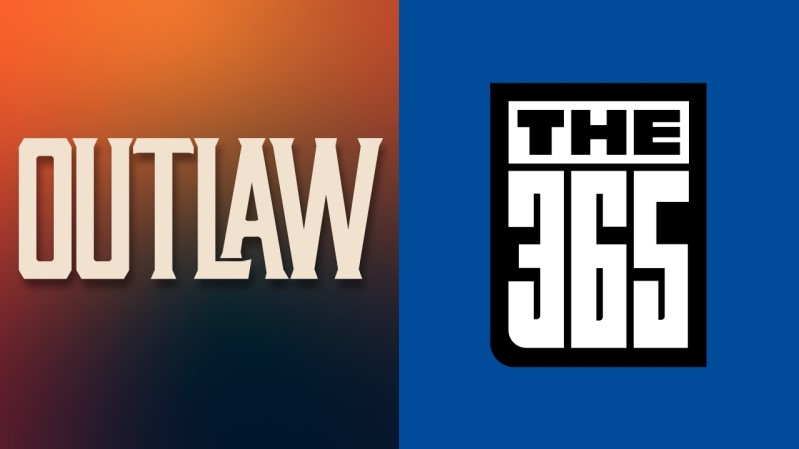
New Year Brings Dozens of DTV Channel Changes
Broadcast TV viewers are seeing channel changes in many markets as a result of national digital subchannel changes as the new year begins.
Circle and Twist have left the air, while new networks Outlaw and THE365 have launched. Meanwhile, Dabl made a change in programming from cooking and home improvement to reruns of sitcoms that originally aired on UPN, the WB, and the CW.
Here is a summary of channel changes:
Des Moines: Tegna’s WOI-DT/5.6 replaced Twist with a simulcast of True Crime Network, which also airs on 5.2 (station website listings)
Omaha: Gray’s WOWT/6.6 replaced Circle with THE365 (station announcement)
Ottumwa: Gray’s KYOU-TV/15.3 replaced Circle with THE365 (station announcement)
Quad Cities: Gray’s KWQC/6.6 replaced Circle with Outlaw (network website). Tegna’s WQAD/8.5 replaced Twist with Quest, which also airs on channel 8.6 (station website listings)
Rochester: Gray’s KTTC/10.6 replaced Circle with Outlaw (network website)
Sioux City: Gray’s KTIV/4.6 replaced Circle with Outlaw (station announcement)
Note: Outlaw and THE365 are also listed as airing on several low-power TV stations not listed above; see the network’s websites for details
189